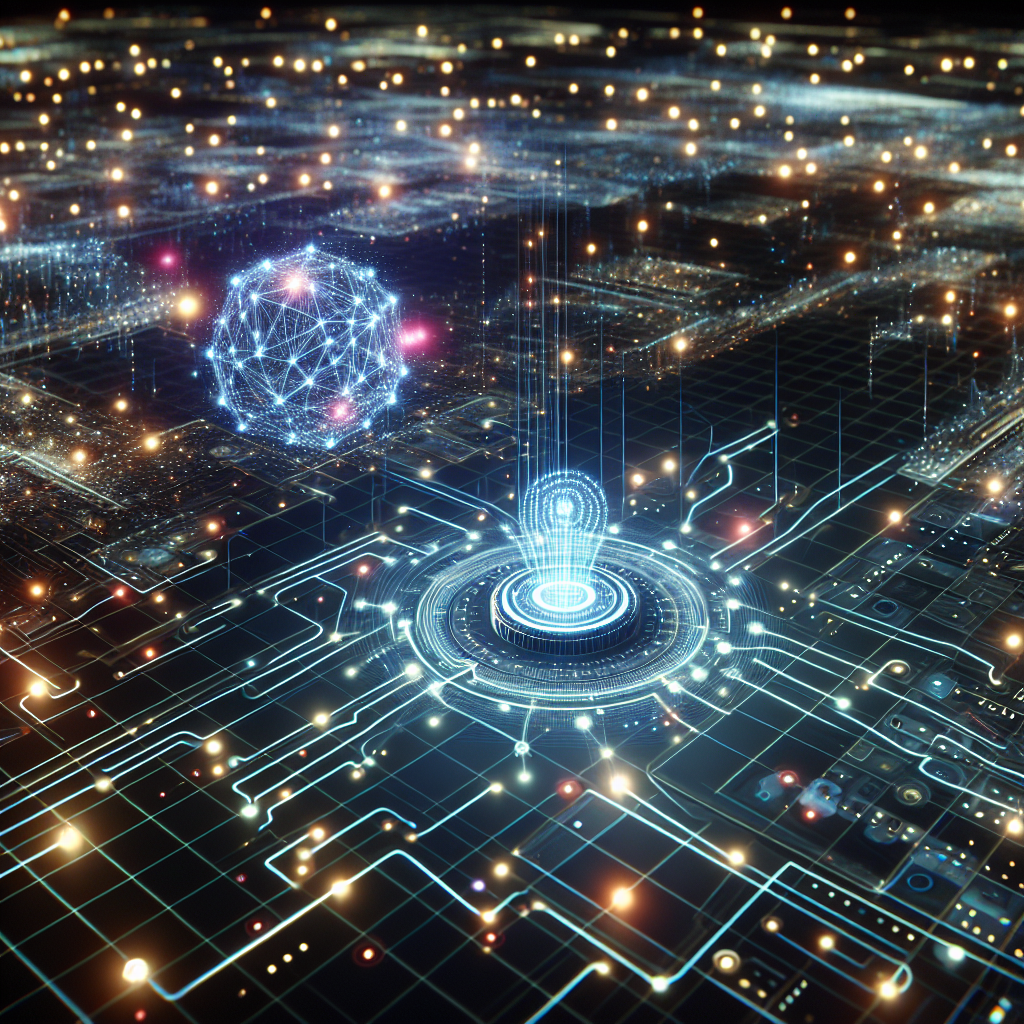The integration of artificial intelligence (AI) in smart grids is revolutionizing the way we manage and optimize energy distribution. Smart grids are modernized electrical grids that use digital technology to monitor, control, and manage the flow of electricity more efficiently. AI plays a crucial role in enhancing the performance of smart grids by enabling predictive maintenance, real-time monitoring, and intelligent decision-making. In this article, we will explore the various applications of AI in smart grids and how they are transforming the energy sector.
1. Predictive Maintenance
One of the key applications of AI in smart grids is predictive maintenance. AI algorithms can analyze historical data, sensor readings, and other relevant information to predict when equipment is likely to fail or malfunction. By identifying potential issues before they occur, maintenance can be scheduled proactively, reducing downtime and improving the overall reliability of the grid. This proactive approach to maintenance helps utilities save time and resources while ensuring that the grid operates at peak efficiency.
2. Real-Time Monitoring
AI enables real-time monitoring of the smart grid, allowing operators to detect anomalies, identify potential problems, and take corrective actions in a timely manner. By continuously analyzing data from sensors, meters, and other sources, AI algorithms can provide insights into grid performance, voltage levels, power quality, and more. This real-time monitoring capability helps utilities optimize grid operations, prevent outages, and improve overall system efficiency.
3. Demand Response
AI technologies are also being used to implement demand response programs in smart grids. Demand response allows utilities to adjust electricity consumption in response to fluctuating prices, grid conditions, or supply constraints. AI algorithms can predict peak demand periods, analyze consumer behavior, and optimize energy usage to balance supply and demand more effectively. By encouraging consumers to reduce energy consumption during peak hours, demand response programs help utilities manage grid reliability and reduce costs.
4. Energy Forecasting
AI can improve the accuracy of energy forecasting in smart grids by analyzing historical data, weather patterns, and other factors that influence energy consumption. By predicting future energy demand, generation capacity, and grid conditions, utilities can optimize resource allocation, reduce costs, and improve grid stability. Energy forecasting using AI can help utilities plan for contingencies, optimize renewable energy integration, and enhance overall grid performance.
5. Grid Optimization
AI algorithms can optimize grid operations by analyzing complex data sets, identifying patterns, and making intelligent decisions in real-time. By optimizing grid configurations, adjusting power flows, and minimizing energy losses, AI can help utilities improve efficiency, reduce costs, and enhance system reliability. Grid optimization using AI enables utilities to make informed decisions, optimize energy resources, and meet evolving grid requirements.
6. Fault Detection and Diagnosis
AI technologies can detect and diagnose faults in the smart grid more accurately and quickly than traditional methods. By analyzing data from sensors, meters, and other sources, AI algorithms can identify abnormal behavior, locate faults, and recommend appropriate actions to mitigate the impact of disruptions. Fault detection and diagnosis using AI help utilities maintain grid reliability, reduce outage durations, and improve customer satisfaction.
7. Cybersecurity
AI is also being used to enhance cybersecurity in smart grids by detecting and mitigating potential threats, vulnerabilities, and attacks. AI algorithms can analyze network traffic, monitor system behavior, and identify suspicious activities that may indicate a security breach. By proactively responding to cybersecurity threats, utilities can protect critical infrastructure, safeguard sensitive data, and ensure the integrity of the smart grid.
In conclusion, the applications of AI in smart grids are vast and diverse, ranging from predictive maintenance to grid optimization to cybersecurity. By leveraging AI technologies, utilities can improve grid reliability, optimize energy resources, and enhance system efficiency. As the energy sector continues to evolve, AI will play an increasingly important role in shaping the future of smart grids and driving innovation in the industry.
FAQs
Q: How does AI improve grid reliability?
A: AI improves grid reliability by enabling predictive maintenance, real-time monitoring, fault detection, and grid optimization. By analyzing data and making intelligent decisions, AI helps utilities prevent outages, reduce downtime, and enhance system performance.
Q: What are the benefits of using AI in smart grids?
A: The benefits of using AI in smart grids include improved grid reliability, optimized energy resources, enhanced system efficiency, reduced costs, and increased grid resilience. AI technologies enable utilities to make informed decisions, predict future trends, and optimize grid operations.
Q: How does AI enhance cybersecurity in smart grids?
A: AI enhances cybersecurity in smart grids by detecting and mitigating potential threats, vulnerabilities, and attacks. By analyzing network traffic, monitoring system behavior, and responding to security threats, AI helps utilities protect critical infrastructure, safeguard sensitive data, and ensure the integrity of the smart grid.

